Canada’s First Presbyterians
by R.C. Campbell, 2018
It began around the middle of the 18th century, with several denominational variations on a theme of ‘Presbyterianism’ that arrived almost simultaneously. Some were imported by those expatriate Scots who began crossing the Atlantic Ocean into that part of what was Lower Canada and now recognized as ‘The Maritimes’. The year 1773 saw the arrival of 186 Scots at Pictou, Nova Scotia, aboard the sailing ship Hector. This marked the first significant migration from that country. Most were involuntary exiles, resulting from atrocities perpetrated during the ‘Highland Clearances’. Back then, there was a choice of seven Presbyterian denominations in Scotland and there still is today. Other Presbyterians were among the ‘Empire Loyalist’ exiles that began flooding into Upper and Lower Canada, around 1775, when the American Revolution was getting under way.
From those beginnings, variations on a Presbyterian theme gradually immigrated to Upper Canada, depending upon the theological mood of the local populace. Eventually the Presbyterian Church found toe and sometimes footholds across the entire country.
Then came a time when the old wounds of trans-Presbyterian denominational partitions that caused these variations healed sufficiently. In the wake of this, came the first General Assembly of a recently amalgamated Presbyterian Church in Canada. This took place in Montreal on June 15th, 1875. The first sederunt (sitting) was held, of all places, in the Victoria Skating Rink. The remaining sederunts were held, more appropriately, within Erskine Church, which had been around since 1833. Fifty years later, new animosities surfaced, when about two-thirds of all Canadian Presbyterians decided to join ranks with most of the Canadian
2
Congregationalist and Methodist Churches, to form the United Church of Canada.
That happened in 1925, and the present-day Presbyterian Church in Canada exists, in large measure, due to the tenacity of the onethird who adamantly declined church union. It began, close to midnight on June 9th, 1925, the day on which Church Union had been enacted. This took place at the General Assembly, held in College Street Presbyterian Church, Toronto. After it, a late-night meeting was convened. At it were around 77 dissenting Clergy and Elders, representing the one third of Presbyterian congregations which did not concur with the act. They had gathered for prayer in nearby Knox Presbyterian Church. Later, in the early hours of the morning, they were duly constituted as the “continuing” General Assembly of the Presbyterian Church in Canada. A second sederunt was held later, on June 10th, this time in St. Andrew’s Presbyterian Church. From then until 1939, the denomination was known as the Continuing Presbyterian Church in Canada and that, in a nutshell, is how The Presbyterian Church in Canada came into being.
Presbyterian theology and beliefs find much of their basis in the doctrines expressed by John Calvin, with emphasis on themes such as justification by faith, the priesthood of all believers, and the importance of the Bible. Also evident in Presbyterian teaching is the strong belief in the sovereignty of God, held by Calvin. He developed a volume of Ecclesiastical Ordinances, set forth regulations on issues related to church order, religious training, gambling, dancing, and even swearing. Strict church disciplinary measures were enacted to deal with those who broke these ordinances. John Knox brought his slant on ‘Calvinism’ to Scotland on his return from exile. About 200 years later, Presbyterian immigrants brought their versions of Calvin’s teaching to Canada. Although much modified across the intervening years, echoes of
3
John Calvin remain in Canada’s Presbyterian congregations even now.
By the early 1950s, the once supposed Scots monopoly in The Presbyterian Church was becoming a thing of the past among Canadian congregations. By then, the denomination had absorbed significant ‘ethnic colour’ from English, Dutch, French, German and Hungarian Protestants, along with various other immigrant and some indigenous Presbyterians. Perhaps the most noticeable legacy of those bye-gone ‘Scottish’ days is to be found in the ‘oldcountry’ names that the original preponderance of Scots Presbyterians gave their places of worship. From coast to coast, for example, there is an abundance of churches called St. Andrew’s [Scotland’s patron saint] and Knox [after John, ‘father’ of the 1560 Scottish Reformation]. Then there is the proliferation of Scottish names given to the towns and villages, littered across the entire country, where expatriate Scots and their descendants planted Presbyterian churches. Although much of the foregoing has little to do with Trinity York Mills, it serves as a brief background to the genesis of Presbyterians in Canada.
The Burning Bush Emblem
Why we use it: by The Presbyterian Church in Canada, 1968
Honesty forces the admission that The Presbyterian Church in Canada uses the Burning Bush as a symbol, and ‘nec tamen consumebatur’ (yet not consumed) as a motto, because we inherited this dual emblem from the Church of Scotland. They, in turn, seem to have acquired it from the Continent, according to Professor C. D. Henderson of Aberdeen, in his book, ''The Burning
4
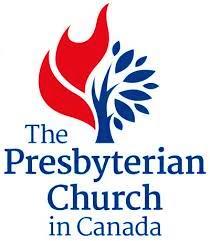
Bush."1 There is probably nothing about the Burning Bush so characteristically Presbyterian that no other symbol would suffice. Neither can we assume that if we were to start today to find a suitable emblem without benefit of previous knowledge or usage, the odds would be overwhelmingly in favour of The Burning Bush being discovered and chosen.
Nevertheless, as in the case of our parents, for example, whom we did not choose, but with whom we have been for the most part eminently content, we find The Burning Bush a very satisfying inheritance. The bush, lowly and common as compared to a majestic, towering tree, symbolizes the humility called for in the Church as over against the standards of the world, and the way in which God often chooses the weak and base things of the world to confound the mighty.
But what does The Burning Bush say to us? It says that God will always be, and that God will always be God. It tells us (from the historical setting in Moses' experience) that God is the covenanting God, and that God’s people (the Church) constitute a covenanted and covenanting people. The God of Moses (of Abraham, Isaac, and Jacob) speaks God’s Word today from The Burning Bush, that is, the Church, in Jesus Christ, the living Word. In Christ’s presence we are
1 Henderson, C. D. "The Burning Bush", Edinburgh. The Saint Andrew Press, 1957
5
indeed on ‘holy ground’. Here we receive ever anew our commission, "Go tell."
The people of God, moreover, are indestructible, burning "yet not consumed", as long as they remain the people of God, and no persecution, travail or buffeting can ever prevail against them. But the fires of God must be kept burning. That is the Church's task, of which The Burning Bush is a constant and demanding reminder.
What’s in a Name? Trinity Presbyterian Church York Mills
by R.C. Campbell, 2018
Trinity – Although there are now around seven Canadian Presbyterian Churches bearing the same name, for many years after its inception, ‘Trinity’, in York Mills, was unique. This likely says something about the cross-cultural mix among its founding members; otherwise, there is more than a fair chance it would have been another St. Andrew’s or a Knox. It may also say something of the theology in the minds of these founding members. Was no person’s name good enough, saint or otherwise? Were the ideals so high, and the inspirations so bold that only God, the three in one, Father, Son, and Holy Ghost, could encapsulate them, in the Holy Trinity?
The Trinitarian theology is one that is frequently discussed and occasionally argued, probably as a result of its terminology having no specific Biblical roots. It is alluded to, but never stated, yet it has almost universally achieved the status of doctrine, in the Christian church. It was the prolific author, Tertullian c. 160 - c. 225 AD, who lived out his days in Carthage, a suburb of Tunis, North Africa, who created the earliest known Trinitarian theology. Among his writings, he formulated the expression Trinitas Sanctus, which he
6
described as tres Personae, una Substantia, the Holy Trinity - three Persons, one Substance. All three components became embodied in the creeds, dating back to the Council of Nicaea, in 325 AD.
That aside, the early Christian church was quick to grasp the concept, giving great importance to God, as one in three and three in one. In fact, it is said the early Christians believed in and prayed to all three, before there was a ‘Trinitarian’ doctrine. God, the Father who created us and all the earth; God the Son, Jesus Christ our Saviour, who was crucified, died and arose again, that our sins might be forgiven and the Holy Spirit, our comforter and advocate, particularly in times of trial; ever three, yet ever one God.
Presbyterian – The origins and implications of the word ‘Presbyterian’ refer to the form of government that is used by a church or a group of churches. It derives its meaning from the Greek word presbuteros, which is used throughout the New Testament in connection with the rule of the church and is usually translated 'elder.' Presbyterian churches find their roots, during the Protestant Reformation, in mid-16th century Switzerland, with expatriate French cleric, John Calvin 1509-1564. Reformers believed that the sole head of the Church was Christ Himself, who works through offices, which He has clearly instituted in His Word, and not a single leader on earth. They also believed in maintaining a sense of unity and purpose with other churches, especially in matters of appeal and denominational policy. While exiled in Geneva, Scottish Protestant cleric and former Roman Catholic priest John Knox 1505-1572 became a disciple of Calvin. Upon his return to Scotland in 1560 Knox worked to reform the churches in Scotland to the Presbyterian governmental form. Many other churches throughout Europe also reformed their church rule according to this New Testament model. Only the Scottish churches and some others elsewhere in Britain used the name
7
'Presbyterian’, before spreading it to other countries around the world.
A Presbyterian church governs its congregations with both teaching elders (the minister) and ruling elders (spiritually mature Christian men and women in the congregation, gifted accordingly). Both are ordained (set apart) to their different offices. Together they make up the ‘Kirk Session’ of a congregation. When joined with ‘Elders’ of other local congregations from their denomination they form ‘Presbyteries’ , ‘Synods’ regionally and ‘General Assemblies’ at the national level. It should also be understood that the minister does not belong to nor is a member in the congregation, but to the Presbytery. Often misunderstood to be a democratic government form, the Presbyterian system is really ‘theocratic’. That is, the governance processes are undertaken by those who have been set apart to serve and govern in the name God. In this capacity and in their actions, they are regarded as being divinely guided. “Not to us, O Lord, not to us, but to your name give glory, for the sake of your steadfast love and your faithfulness.” Psalm 115:1 NRSV
The role of the Elders or collectively, the Kirk Session in each church, is to promote and protect the purity and peace of its members. Its rule is of an ecclesiastical (pertaining to the church) and spiritual nature. Those ordained have been charged to watch diligently over the flock in their care by being a good and humble example, by teaching, exhorting, and encouraging the congregation with sound doctrine, by praying continually for its people, by visiting the sick, by administering the sacraments, by disciplining the disobedient and unrepentant, and by governing the worship service and church gatherings in a manner which reflects the love and care of Jesus Christ, the Good Shepherd.
Church – The word ‘church’ means a “building for public Christian worship”, according to the Oxford dictionary. Its roots come from
8
the Greek word kurikon or kuriakon, or ‘Lord’s house’, and it is from those roots that the Scots, Germans, and some Scandinavians brought the word Kirk into their languages. This survives, in the present-day Canadian Presbyterian Church, as the Kirk Session. This, as already illustrated, being the full title of the body elected and ordained to govern each of its congregations. More commonly it is referred to simply as ‘The Session’.
‘Church’, of course, can mean many things to many people, not just ‘The Lord’s house’. Individual congregations use it to identify themselves. It can also be used corporately, as in The Presbyterian Church in Canada, by way of identifying the entire denomination. For some, who follow church hymnody, as in, “I am the church! You are the church! We are the church together! All who follow Jesus, all around the world! Yes, we're the church together!” Richard K. Avery & Donald S. Marsh, 1972. For them, the church is also the people.
Strictly speaking, the hymn is incorrect. The members and friends who belong to/attend a particular place of worship form a church congregation. This introduces a second Greek word, ekklesia, meaning ‘assembly’. The meaning, if not the word, worked its way into Latin, where it became congregatio. From that comes ‘congregation’, which is a group of people assembled for religious worship, or regularly attending a particular place of worship. So, there is ‘The church’, or ‘Lord’s house’ together with the ‘congregation’ who assemble, or gather in the Lord’s house, to praise and worship the Lord and to do the Lord’s work.
York Mills – There are at least two possible sources for the name of Toronto. One comes from the Seneca word Giyando, meaning “on the other side”. Another is the Mohawk word tkaronto for which a majority claims the meaning “where there are trees standing in the water”, while others suggest it is Huron for
9
‘meeting place’. For a while, it was Taronto and in 1695 it became Toronto. Along comes John Graves Simcoe 1752-1806, Lieutenant General of Upper Canada, who renamed it York, in 1793. This was by way of honouring Prince Frederick, Duke of York, second son of King George III. The name reverted to Toronto in 1834, with the incorporation of the city. The original York is the name of a city in north-east England. Its name comes from Old Norse Jóírvík, derived from Latin Eboracum, meaning “boar” or “wild swine”.
York Mills takes its name from the three or four grist and sawmills that operated in the valley of the West Don River, from 1804 until 1926. These originally served the town of York. During this period of industry, York Mills was a busy place. In addition to the mills, there was a distillery, tannery, blacksmith shop, three churches, a school, post office, tollgate and two hotels. One of them was the York Mills Hotel, built in the 1860s. This later became the Jolly Miller Tavern and is now the Miller Tavern, at 3885 Yonge Street. The rural hamlet began transitioning to a residential neighbourhood in the 1930s. From the post WWII 1940s, through the 1950s, local developer E. P. Taylor was responsible for subdividing much of York Mills east of Bayview Avenue. Before then the land in the area had been Bayview Farms. Mr. Taylor was also responsible for creating the York Mills Plaza, at the corner of Bayview Avenue and York Mills Road, in 1952.
About Trinity by The Kirk Session, 2023
Trinity’s tag line, ‘Amazing grace. Warm embrace’ conveys the heart and hope of Trinity. In addition to celebrating the Good News of the Christian Gospel, it acknowledges the spirit of love and care that happen under the roof at 2737 Bayview Avenue, and to wherever and whomever that love, and care extend.
10
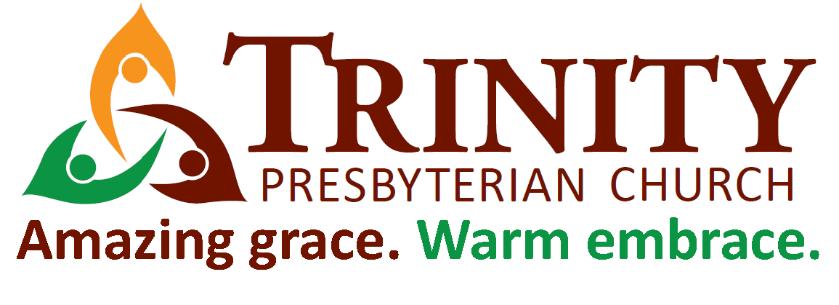
Amazing grace
“My grace is sufficient for you.” 2 Corinthians 12:9
When a judge pardons a guilty person, or when someone buys a meal for a homeless person; that is grace. We live in a world very focused on earning, deserving, and merit. Grace is the opposite. It is about mercy, compassion, and kindness. Grace is unconditional love toward someone who does not deserve it. Grace is full of a love that will not let us go, no matter what. God loves us more than we can imagine, and more than we could ever deserve. God loves us so much that He sent His only son, Jesus, to be our Saviour, Lord, and Friend. Jesus loves us even when we are unlovable. That’s amazing grace!
Warm embrace
“If we love one another, God lives in us.” 1 John 4:12
People at Trinity come from so many different walks of life, lifestyles, and countries. We celebrate this! God invites people to join us, and we welcome them with open hearts and minds. What powerfully unites us is that we are a community bound by our love of God and for each other. Trinity is the smile that greets a visitor or our oldest member on a Sunday morning. Trinity is the lively
11
conversation over coffee after worship. Trinity is the support for each other when we need it most. Trinity is the love that we share with each other and all others. That’s our warm embrace!
About our logo
Our logo represents the eternal Trinity: Creator, Christ, and Spirit. We believe in one God, three in one, together giving us life and love. Our logo also represents the people of Trinity, reaching out to each other. The three different colours represent diversity and inclusion within and from our Church.
Our logo represents all that unites us as a community of faith: our love of God, and for each other.
Trinity – It’s Earliest Days by R.C. Campbell, 2018
The 1950s saw Canada’s post-WWII population booming. In Toronto, people from the rural surroundings were relocating in the city, while new immigrants were arriving by the boatload. The population was pushing west, north, and east. In anticipation of this, in 1949 the Toronto Presbytery had split into the East and West Toronto Presbyteries. Between them, they built 15 churches during the decade. Three of the 15 were built only a few kilometers distant from the Bayview Avenue plot of ground that would become Trinity Presbyterian Church York Mills. This placed it sort of in the middle. To the west and south was Armour Heights Presbyterian Church, established on Wilson Avenue in 1951. North and west, although Willowdale Presbyterian Church had been around, in various forms and locations since 1925, in 1952 its present building was constructed on Ellerslie Avenue. South and
12
east, St. Mark’s Don Mills Presbyterian Church was established on Greenland Road, also in 1952.
Just as there was pre-history before history, there was something before Trinity. It began with an idea, a hope, and a prayer. It was the “Yorkminster survey”. Here, in abbreviated form, is how Trinity began. A letter was sent by the Presbytery of East Toronto, in November 1950, addressed to the Kirk Session of Glenview Presbyterian Church. Session responded positively, as did the Congregation, on January 17th of the following year. Consequently, a survey of the Yorkminster district was conducted, with a view to establishing a Mission Church. Approximately, that was the neighbourhood bounded by Yonge Street to Bayview Avenue and south of Sheppard Avenue.
In April of 1952, the Glenview Kirk Session appointed an Extension Committee, chaired by Mr. George McRae. Its function was to liaise with Presbytery, the Home Mission Board of the National Church, lawyers, real estate agents and North York Township, in arranging for land purchase. An Organization Committee chaired by Mr. Tom Dutton was created in June and arranged for temporary worship accommodation. In September of that year, this committee met with a small group of interested residents from the rapidly developing Bayview-Lansing community. The fact that, on October 12th of that year, worship services commenced in Harrison Road Public School, speaks volumes on the success of the meeting, the Organizing Committee and the small group of residents.
Mr. Walter Donovan, then a student in his final year at Knox College, was placed in charge of the new mission work, assisted by Miss Jessie McDonald, who was a Deaconess. Four and a half months later, on February 17th, 1953, the Presbytery of East Toronto installed the Rev. Robert H. M. Kerr as Minister in Charge. Under his guidance and with the assistance of Elders from the Kirk
13
Session at Glenview, the Congregation was established on April the 19th of that year. With a Charter Membership of 33, the name “Trinity Presbyterian Church York Mills” was adopted.
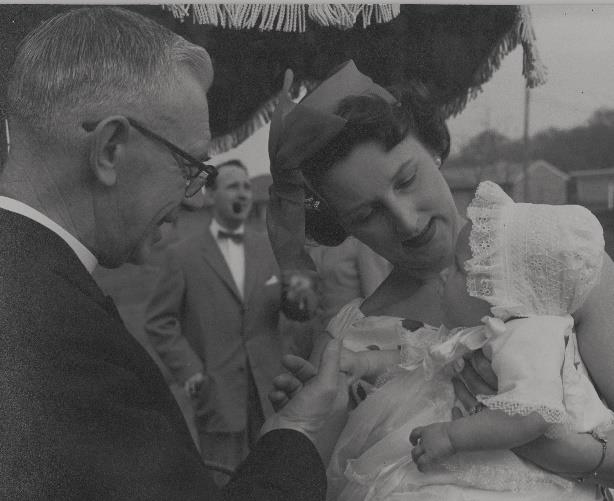
The congregation’s first Baptism took place on April 26th, 1953. The Rev. R.H.M Kerr officiating.
The name did not just happen, although Trinity was the first suggestion. It was offered by Mr. A. Shanks and was then moved by Mr. Clive Williams and seconded by Mr. C. W. Gibson. Someone else suggested the name Bayview and it gained some ground, in discussion. Mr. J. Allenby suggested that the location York Mills be added. The J. Allenby amendment was accepted by the mover and seconder of the original motion and the current name was carried by a majority vote. At a call of the Moderator for unanimity, an appropriate motion was made and the name of the new congregation “was unanimously adopted and ratified.”
Trinity is indebted to Glenview Presbyterian Church, for the foundation work of its Extension and Organization Committees. The Glenview Mission Fund provided financial assistance. Glenview members donated the pews. It was Elders from Glenview who formed the Kirk Session, during the earliest, formative phase of the Congregation. Christians believe in a generous God. Christians reflect that generosity and give, through faith, because they love
14
God and believe God will do great things. Without the generosity, diligence and powerful belief of Glenview Presbyterian Church, there may never have been a Trinity Presbyterian Church York Mills. The Congregation of Trinity recognizes that, through its neighbours at Glenview, “The Lord hath done great things for us; whereof we are glad.” Psalm 126:3 KJV
On April 3rd, 1955, when the congregation had 65 communicant members, the original [250 seat] Sanctuary was dedicated, at 2737 Bayview Avenue, North York. Trinity ceased to be a ‘mission charge’ exactly one year after the sanctuary dedication, at which time; Rev. Kerr was inducted as the minister of Word and Sacraments, into the ‘self-sustaining charge.’
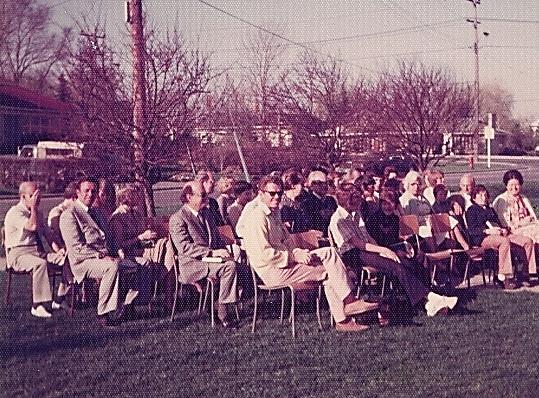
Easter April 18th , 1976
70th Anniversary Sunday, May 7th , 2023
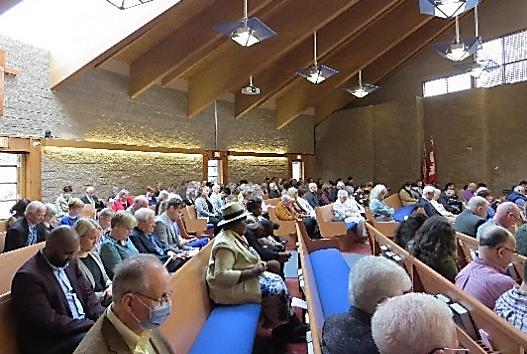
15
Some Insights on the Neighbourhood by R.C. Campbell, 2018
(and since updated)
Construction of Concession 1 (Yonge Street) was completed in 1796. The settlement of York Mills was built around 1804, in what became Hogg’s Hollow. This area was first established as a transfer point for the Northwest Company. It has been said that barges brought cargo up the Don River, then followed the West Don to York Mills. Here, the cargo was trans-shipped to wagons, then hauled to Holland Landing. The same river water that floats barges could also turn wheels. As was described earlier, with the description of York Mills related to the church name, the valley was to become a busy little industrial region, in the middle of nowhere.
Sixteen years after Yonge Street was opened to traffic, St. John's York Mills Anglican Church was built in 1816, atop Don Ridge, the hill overlooking the northeast corner of Yonge Street and York Mills Road. 1833 saw the establishment of York Mills Baptist Church, which stood at what is now 102 York Mills Road for 115 years. York Mills Presbyterian Church holds the honour of being the first of this denomination in the area. It was constructed on or about 1836, on the property of James Hogg. This was east of Old Yonge Street on an embankment of the West Don River. This was close to where Ivor Road and Donino Avenue are today, south of the Miller Tavern.
Among the first ministers was a Scot, the Rev. Thomas Wightman, who served both York Mills and Fisherville until 1856. He was followed by an Irish minister, the Rev. Robert Jamison. Fisherville (Mills) was bounded by present day Bathurst and Dufferin Streets, between Finch Avenue West and Steeles Avenue West, which includes G. Lord Ross Park. That church is now in Black Creek Pioneer Village. The York Mills church building was relocated in
16
1859, to land on part of Lot 10 on the west side of Old Yonge Street, deeded to it by Scottish Loyalist Andrew McGlashan.
As residential areas neighbouring York Mills developed, by 1885 many members had relocated to other congregations, so the Presbyterian Church closed, and the building was eventually torn down. Incidentally, in 1955 prior to residential development of the site, the church’s forgotten graveyard was uncovered. The remains of twenty-five early settlers were reburied elsewhere including in a common grave in York Cemetery. The land where the church stood remained the property of the Presbyterian Church in Canada until 1958, when it was sold to a developer.
As a footnote to that, while some of those members who moved, went south to worship in Toronto, most moved east, to Don Mills. It was in 1885 that they decided to buy the Bethesda Primitive Methodist Church on the corner of Lawrence Avenue and Leslie Street. In 2000, a merger brought together Bethesda (formerly Presbyterian), Victoria Village, and Donminster United Churches, to form Jubilee United Church, at 40 Underhill Drive, Toronto. Thus, from 1836 to 2018, there are 182 years of congregational continuity, albeit under different names.
When Trinity began worshiping in Harrison Road Public School, it was in what was then the Township of North York, which was created in 1922. Until 1930, Bayview Avenue was called East York Avenue, prior to which it was Concession 2. The name change came about as a reflection of Bay View, the estate of Dr. James Stanley McLean. His house remains part of Sunnybrook Health Sciences Centre. The Township became a Municipality in 1953, and then became a Borough in 1967. Then the ‘borough’ population grew, and it became the City of North York in 1979. Eventually, it was amalgamated with the five other municipalities of Metropolitan Toronto, into the city of the same name in 1998. ‘York Mills’ was
17
the district or electoral ward, within the former North York borough, in which Trinity was located and hence the appellation appearing as part of the congregational title. Now, the municipal electoral district has the more romantic title of ‘Ward 15’, which is recognized as Don Valley West. The district name ‘York Mills’ is now less frequently used, save by long-time residents. Trinity is within the bounds of the York Mills Gardens Community and has become part of the “Harrison Neighbourhood”; a name providing another link to this congregation’s past. Incidentally, William Harrison bought the land at Bayview and York Mills in 1815, when Andrew McGlashan sold him Bayview Farm, then moved to Hoggs Hollow, where he built a tannery.
For those curious about neighbourhood history, although Highway 401 [originally 2A] had been in its planning stages since 1935, construction of the ‘Toronto Bypass’ only commenced in 1951. Then, it was a short section between Yonge Street and Weston Road, completed late in 1952. When the ‘Bypass’ or ‘Interceptor Road’ was completed from Islington Avenue to Markham Road, in 1956, it consisted of two lanes in each direction. In 1963, plans were announced for a massive expansion of the new highway, from 4 to 12 ‘collector’ and ‘express’ lanes and this was completed in 1967. Estimates in 2017 say that half million vehicles cross over Bayview Avenue every day, on the highway’s 16 lanes.
The original ‘community’ investigated by those Extension and Organization Committees from Glenview Presbyterian Church was between Yonge Street and Bayview Avenue, south of Sheppard Avenue. The highway development effectively split that community, socially as well as geographically. This is a facet that has been noted as typical by social demographers, with respect to similar developments in Toronto and elsewhere. That apart, and despite an untimely land expropriation, this highway and others
18
linked to it, appear to have been more beneficial than detrimental to Trinity.
At Trinity’s beginning, the neighbourhood from which its members were drawn was largely of Anglo/European and Christian origins. For almost thirty years, the sign outside Trinity read, ‘The Church of the Community’. In 1955, when Trinity Church was built, Bayview Avenue was less than half as wide as at present. The original Highway 401 was a year from completion, and the ‘new homes’ being built for the incoming population were relatively modest in size. In every sense, Trinity’s surroundings were truly that of a typical suburban, almost rural community. There were still farms operating, not too far distant.
While riding a wave of post-war economic prosperity, and experiencing a ‘booming’ birth-rate, the population in the City of Toronto surpassed the one million mark during 1951. And the suburbs [i.e. the five surrounding boroughs] had added more than 200,000 by 1953. The urban area expanded to such a degree that disputes between city and suburbs were frequent. The demand for infrastructure, social and other services became so great that the Metro Council was formed in 1953.
Up until the 1950s immigrants to Canada, Ontario and Toronto were primarily British, American, or French. With the repealing of the Chinese Exclusion Act in 1947, the door for relatives of Toronto's then-small Asian community was opened. Anti-Semitism had been widely practiced, and then Nathan Phillips became Toronto’s first Jewish mayor in 1954. After 1950 the immigration door opened wider. Germans and Italians were allowed to enter, adding to already established communities. Under pressure from the United Nations, Poles, Ukrainians, Central European and Russian Jews, Yugoslavs, Estonians, Latvians, and other East Europeans poured in.
19
By the beginning of 1951 the Toronto population was 1.2 million. Foreign-born citizens were 31% of the population; by 1961 they were 42%, and the number of people claiming British descent had fallen from 73% to 59%. The 1960s brought an even richer mix of people - Portuguese, Greeks, West Indians, South Asians, Chinese and Vietnamese, also Chilean refugees. All of this changed the character of this once ultra-White, Protestant, Anglo-Saxon Protestant city. During the 1970s, when Trinity was again considering creating a larger building, demographers from the national church offices pointed out that the ‘community’ neighbourhood had changed. To create a perspective of where the local population comes from, Statistics Canada notes the following from 2011: The top ten mother tongue languages spoken in Don Valley West (the federal electoral district where Trinity is located) are in descending numerical order: English, Chinese (not otherwise specified), Persian (Farsi), Cantonese, Mandarin, Korean, French, Russian, Spanish, Tagalog (Pilipino, Filipino). Other languages account for 14.6% of the 58,315 total ward population.
In 2011, within the city bounds, the population was 2.6 million, with a further 3.4 million living in the surrounding urbanized areas. Canadian born citizens of Toronto were 11.3% of the population. Those born in Britain and Ireland amounted to 33.1%. Also, approximately 200 different languages were spoken in Toronto and 45% of the residents spoke a mother tongue other than French or English.
In the 2021 census the top ten mother tongue languages spoken in Don Valley West are: English (55,465), Mandarin (4635), Urdu (4300), Yue [Cantonese] (2805), Iranian Persian (2775), Spanish
20
(1945), Tagalog (1725), Arabic (1665), French (1560), and Korean (1180).2
According to the health statistics for Toronto, in 1953 the average age of the mother at childbearing was 28.5 years, by 1973 it was 27.5, and by 2011 it had risen to 30.1. In 2011, Statistics Canada related the following: “Let's see, your great-grandfather was 1 of 7 children. Your grandmother was 1 of 4 children and you are 1 of 3 kids. You are thinking of having 1 or 2 kids, or, if you happen to be a statistician, that's currently an average of 1.61 children per woman. … 1971 was the last year the replacement-level fertility of 2.1 children per woman was reached—meaning that couples, on average, had produced enough children to replace themselves. That 2011, total fertility rate was up slightly from the record low of 1.51 children per woman, about a decade earlier.”3
The original 1940s and 1950s era homes in the Trinity neighbourhood tended to be ‘ranch-style’ bungalows. Although modest by current standards, they were located on large pieces of real estate and suited the 3 or 4 children born into them. A gradual renewal trend began in the 1980s, when many of the originals were being replaced with dwellings described by many as ‘monster homes’, a pattern that is currently continuing, for the 1.6 children per family dwelling.
Roughly speaking, the area recognized as ‘York Mills’ lay west to east, immediately south of highway 401, from Yonge Street to Leslie Street. For the western half, its southern boundary was York
2 https://www12.statcan.gc.ca/census-recensement/2021/dppd/prof/details/page.cfm?Lang=E&SearchText=Don%20Valley%20West&DGUI Dlist=2013A000435021&GENDERlist=1,2,3&STATISTIClist=1&HEADERlist=0
3 www.statcan.gc.ca/pub/11-630-x/11-630-x2014002-eng.htm
21
Mills Road. At Bayview Avenue, this dipped south, following Wilket Creek to Lawrence Avenue.
Don Mills, to the east of York Mills, was a new town, built between 1952 and 1962, by brewery magnate (Carling/O’Keefe) and horse breeder, E. P. Taylor. Almost half of Lansing, the district north of York Mills Road and south of Willowdale Avenue, disappeared beneath highway 401. Yorkdale shopping center was built in 1964 and North York General Hospital opened about four years later.
The original highway 401 was designed for a traffic flow of 35,000 vehicles per day. Currently, traffic flow is 14 times that and it is recognized as one of the busiest highways in North America. Traffic volumes on Bayview Avenue have increased proportionally. At the end of March 1954, the Yonge Street subway line opened between Union Station and Eglinton Avenue, to help join the city with its suburbs. On March 31st, 1973, the line was extended to York Mills Road and one year later the northern terminus reached Finch Avenue. More recently, on November 24th , 2002, a subway (Line 4) opened between Yonge Street and Don Mills Road along Sheppard Avenue.
Along a corridor, bounded by Yonge and Leslie Streets, Highway 401 and Sheppard Ave, there has been and continues to be massive redevelopment. It is the construction of high-density residential developments which, when completed, will increase the local population by an estimated 50,000 to 100,000 people.
During the early 1980’s, Trinity noticed demographic changes to the congregation indicating that it appeared no longer to be a ‘community’ church but had become a ‘regional’ church. Membership and Adherent lists showed addresses of worshipers coming from Mississauga and Bowmanville to the west and east,
22
from Aurora and Newmarket to the north and from all over the Greater Toronto area.
In Closing
by R.C. Campbell, 2018
There can be no doubt in anyone’s mind that Trinity has been many things to many people. To most, it has been a spiritual home. A place in which, through the means available to them in their time, to enrich the Christian pilgrimage through life, a place to more clearly understand the Word of God and themselves and to walk more closely with God, through faith in Christ Jesus. It is a place where lasting friendships have been made and where common interests have been shared in service to the church and to the community.
Countless families have witnessed to the miracle of new life, at the Holy Baptism of their children; as many have celebrated the happy unions of brides and grooms in Holy Matrimony. Then, there have been the funerals, those happy sad times for saying goodbye to parents, siblings, family members and friends; times for committing them to eternal rest in the Lord; the shared sense of loss and emptiness in loving hearts. The congregation has celebrated. It has mourned. Its members have shed innumerable tears of joy and of sorrow. God willing, and given the willing investment of congregational time, talent and treasury, Trinity will continue to witness for Christ, in the service of God.
“Now to him who is able to keep you from falling, and to make you stand without blemish in the presence of his glory with rejoicing, to the only God our Saviour, through Jesus Christ our Lord, be glory, majesty, power, and authority, before all time and now and forever. Amen.” Jude 1:24-25 NRSV
23
Chronological Time-line Trinity Presbyterian Church
York Mills by R.C. Campbell, 2018 (and since updated)
1951 January 2nd: The Kirk Session of Glenview Presbyterian Church received a letter, dated November 10th, 1950, from the Presbytery of East Toronto. This contained a request to survey the district around the Yorkminster Subdivision (Yonge Street to Bayview Avenue, south of Sheppard Avenue), with a view to establishing a Mission Church.
January 17th: The annual meeting of Glenview P.C. heartily endorsed acceptance of this responsibility
1952 April 7th: The survey must have been positive, as Glenview P.C. Kirk Session appointed an eight-person Extension Committee, chaired by Mr. George McRae. This Committee engaged with the National Church Home Mission Board, Presbytery, North York Township, real estate agents and site surveyors.
June 2nd: Glenview P.C. Session discharged the Extension Committee, then struck an Organization Committee under the acting chairmanship of Mr. Tom Dutton
July 31st: A parcel of land had been purchased ($13,500.00) on north-east corner of Bayview Avenue and Truman Road.
September 9th: With the sanction of the Presbytery of East Toronto, the Glenview committee met with a small group of interested residents from this community.
October 12th: Worship services commenced in Harrison Road Public School. Mr. Walter Donovan, a student at Knox College, was placed in charge of the new mission work, assisted by Miss Jessie McDonald, a Deaconess.
24
Church School also commenced on this date. Mr. James Malcolm was superintendent, assisted by Miss MacDonald and there were 23 students
November 16th: Seven members were elected to be the Board of Managers, by the new congregation.
December 21st: The first communion was held, when worship was led by Dr. Munro, of the Home Mission Board. A constituted Kirk Session of Elders from Glenview Church were present, and twenty-eight persons took communion.
1953 February 17th: The Presbytery of East Toronto installed the Rev. Robert H. M. Kerr as Minister in Charge of the congregation at Bayview and Truman. Two days later, the Glenview Extension Committee was discharged.
February 21st: The Rev. Kerr led worship and preached for the first time at Harrison Road Public School
April 19th: The Congregation was established, with a Charter Membership of 33 and with the assistance of Elders from the Kirk Session at Glenview. At that time, the name ‘Trinity Presbyterian Church York Mills’ was adopted.
June 7th: Ordination of Trinity’s first two Ruling Elders
June 19th: Trinity Kirk Session was established
1954 October 24th: Cornerstone of the new Building was laid
1955 April 3rd: With a membership of 65 communicant members, the original [250 seat] Sanctuary was dedicated.
In addition to the Sanctuary, the Minister’s Study, Church
25
Office and Board Room shared the same floor. Below them, in the half-basement was the South Hall, a small nursery, kitchen, washrooms and a choir room.
1956 Trinity ceased to be a ‘mission charge’ exactly one year after the sanctuary dedication, at which time, Rev. R.H.M. Kerr was inducted as the Minister of Word and Sacraments, into the ‘self-sustaining charge’.
1957 March 20th: Kathleen Williams appointed Director of Music
1960 September 11th: The North Hall, together with its associated kitchen, washroom and other facilities were completed and linked to the existing building. Major funding of this development came from 10 members who each signed promissory notes valued at $1,000.00.
1968 April 25th: The Rev. John F. Allan inducted to be Assistant and Successor to the Rev. Robert H. M. Kerr
A proposal to build a larger sanctuary was considered. This would have been parallel with Truman Road, backing onto Bayview Avenue.
Due to financial constraints, but more particularly to the expropriation of land by the North York, Metro Toronto and Ontario roads and highways departments, this proposal was set aside.
The expropriations, to the west, were to accommodate the widening of Bayview Avenue from 2 to 4 lanes, plus the construction of an access ramp to east-bound 401 on the west side. Also, for the realignment of Truman Road, on the south side, to more effectively match with Fifeshire Road, opposite.
26
November 11th: The Rev. Robert H. M. Kerr died, and the Rev. John F. Allan became Minister of the Word and Sacraments.
The L.A.M.P. Report: was adopted by the General Assembly. In it were recommendations encouraging Kirk Sessions to create committees of Policy and Planning, Christian Education, Nurture and Worship, Mission and Outreach. And that these committees mainly have members who were men and women from the congregation, who were not Elders.
1970 Session opted to implement the L.A.M.P. Report recommendations and created Worship & Nurture, Mission & Service and Business & Nominating Committees to the existing Christian Education Committee
1971 October 20th: The Rev. Dr. Howard A. Doig became Honourary Associate Minister
1974 Consideration was given to converting the North Hall into the Sanctuary for an increased seating capacity. Upon further reflection, this was shown not to be cost effective.
1975 Second Century Advance for Christ – celebrating The Presbyterian Church in Canada centenary
1978 25th Anniversary year: An enlarged entrance Narthex to the Sanctuary, extending the building footprint to the south. Oak paneling was added to the walls of the Sanctuary and dedicated to the memory of the Rev. R.H.M. Kerr. An HVAC ducted air system was installed in the Sanctuary. Below it, the Jubilee Room was created.
The land forming the present northern section of the
27
parking lot was given to Trinity by the Borough, City and Province, as repayment for the expropriations. Part of this repayment included a paved entrance driveway to the parking lot, from Truman Road, in front of the building. This disappeared in 1992, beneath newly constructed facilities.
1980 Decade to double membership began with 515 (it had risen to 590 by 1984)
Between March and August upgrades were made to the washroom facilities, adjacent to the North Hall. This included wheelchair accessibility.
1982 Anticipating the arrival of an Assistant Minister, the former Board Room was converted to office/study space.
September 23rd: The Rev. Ronald C. Archer induction as fulltime Assistant Minister.
1985 ComPAC Stewardship Programme began late in the year and was completed by mid-1986
1987 The Rev. John F. Allan resigned, having accepted a call to St. Andrew’s Presbyterian Church, Victoria, BC.
Vacancy: The Rev. Dr. J. J. Harrold Morris appointed Interim Moderator
1988 January 15th: Kathleen Williams retired as Director of Music
May 1st: Alan Hamilton Cowle appointed Director of Music
September 8th: The Rev. Gordon A. Beaton was inducted as Minister of the Word and Sacraments
28
December 4th: Responding to a charge from Visitation Committee from Presbytery of East Toronto, earlier in the year, an event called The Dream Machine is held to provide membership an opportunity to share their dreams and explore Trinity’s mission in the community.
1989 February 5th: Follow-up the Dream Unfolds introduced the concept of a multi-purpose facility for both church and secular use.
February 26th: A congregational meeting considered six choices related to the Trinity buildings, including development of a multi-purpose 100-unit affordable housing building, incorporating church facilities.
August 15th: Although the site was pronounced suitable by the Ontario Housing Ministry, the Trinity multi-purpose development proposal for funding from the HOMES NOW programme was turned down by the Ministry. Shortly thereafter, the congregation opted to build new sanctuary facilities.
Decade to double membership ended with 509 members
1990 The Rev. Ronald C. Archer resigned as Assistant Minister, having accepted a call to St. Andrew's Presbyterian Church, Sarnia, ON
1991 November 1st: The Rev. Kathleen J. Brownlee became parttime Assistant Minister
June: Following a sod turning ceremony, construction of the present [400 seat] Sanctuary began. Participating in the ceremony with the Rev. Gordon Beaton, was the Rev. Dr. John F. Allan, a former Minister at Trinity and the outgoing
29
Moderator of the 116th General Assembly of the Presbyterian Church in Canada. The new construction also included the ‘West Hall’ [beneath the sanctuary], the ‘Doig Room’ and the ‘Centre Court’, plus an elevator servicing the four floor levels between the old and new buildings was installed, making the entire building ‘wheelchair’ accessible. At that time, as the separate ‘Assistant Minister’ office was no longer required and as the functions of the Church Office were expanded, the partition walls were removed to provide a larger open space, accommodating two workstations.
1992 May 13th: The Rev. Dr. Howard A. Doig died
June 21st: during 11:00 am Sunday worship, the Congregation transferred to the new building. Later, on September 27th , the new Sanctuary was dedicated by the Presbytery of East Toronto.
November: The Rev. Kathleen J. Brownlee left to be Associate Minister at Armour Heights Presbyterian Church.
1993 February 26th: Alan Hamilton Cowle died
September 1st: Lenard Whiting appointed Director of Music
1994 The Annual Congregational Meeting adopted the statement that “Our mission is to worship and serve God through faith in Jesus Christ and the power of the Holy Spirit.”
1995 The Rev. Gordon A. Beaton resigned, having accepted a call to St. Andrew’s Aurora, ON.
Vacancy: The Rev. J. Patricia Hanna appointed Interim Moderator
30
1996 June 2nd: The Rev. Thomas J. Kay inducted as Minister of the Word and Sacraments
1997 Kirk Session committees restructured for Mission and Ministry.
1998 A Vision for Ministry draft report produced
1999 The Way Ahead three-year plan was introduced
2000 The Rev. Thomas J. Kay resigned, having accepted a call to Knox Presbyterian Church, Guelph, ON
Vacancy: The Rev. John D. Congram, Interim Moderator and the Rev. Dr. J. J. Harrold Morris, Interim Minister
2001 In February conversion of the original sanctuary into a smaller, more intimate worship centre and meeting room was completed, and it was renamed ‘Founders Hall’. This was accomplished by the construction of a wall immediately in front of what had been the original chancel.
September 30th: Rev. Ferne Reeve inducted as Minister of the Word and Sacraments
2002 The Rev. Gordon A. Beaton, appointed as part-time Pastoral Care Minister
2004 September, the Potentials Visioning Consultancy began.
May: The Potentials Visioning Consultancy was completed.
2005 North Hall roof sub-structure repaired, and shingles replaced with metal
31
The Rev. Gordon A. Beaton retired as part-time Pastoral Care Minister and was appointed as Minister Emeritus.
2008 The Rev. Dr. Jim Czegledi, appointed as part-time Minister of Programming
2009 The Magnetic Church - Friday to Sunday weekend workshop was held
Reroofing of Sanctuary and Kerr Wing new HVAC units installed
2011 Congregational governance revised from bicameral to unicameral, folding Board of Managers into new committees of Session
2013 Kitchen remodeled, new appliances and dedicated heating system installed
The Rev. Ferne Reeve retired at the end of December.
Vacancy: The Rev. Tim Purvis, Interim Moderator and the Rev. Dr. Jim Czegledi, Stated Supply minister
2014 September 7th: The Rev. Kirk T. Summers inducted as Minster of the Word and Sacraments
2016 The Church Office was relocated to the former Chancel area. Archives were relocated to the West Hall. The former office area was converted into an Ante Room. Various reflooring and painting projects were completed.
2017 Sanctuary refurbishment completed.
32
September: Kirk Session Ministries redefined to better serve the congregation.
2018 May: There to Here: A History 1953 – 2018 by Robert C. Campbell released to celebrate Trinity’s 65th anniversary
June 24th: Lenard Whiting’s last worship service as Director of Music
2019 January 1st: Michael Gomiega appointed Director of Music
Indigenous Land Acknowledgement posted on Trinity’s website
Trinity affirms support for full inclusion of 2SLGBTQ+
2020 March 13th: In person worship suspended due to COVID-19 pandemic
March 18th: virtual worship commences with the release of the first episode of Ministry Moment on YouTube. Over the course of the COVID-19 pandemic 107 episodes were released followed by 40 episodes of Good Sunday Morning!
2021 July 11th, 2021: In person worship resumed (in person worship had briefly taken place between September 13th , 2020 to November 15th, 2020)
2023 May 7th: Trinity’s 70th anniversary worship service livestreamed, followed by the start of regular worship services livestreaming on Thanksgiving Sunday.
November 27th: Director of Music, Michael Gomiega and the Trinity Choir performed at Carnegie Hall New York.
33
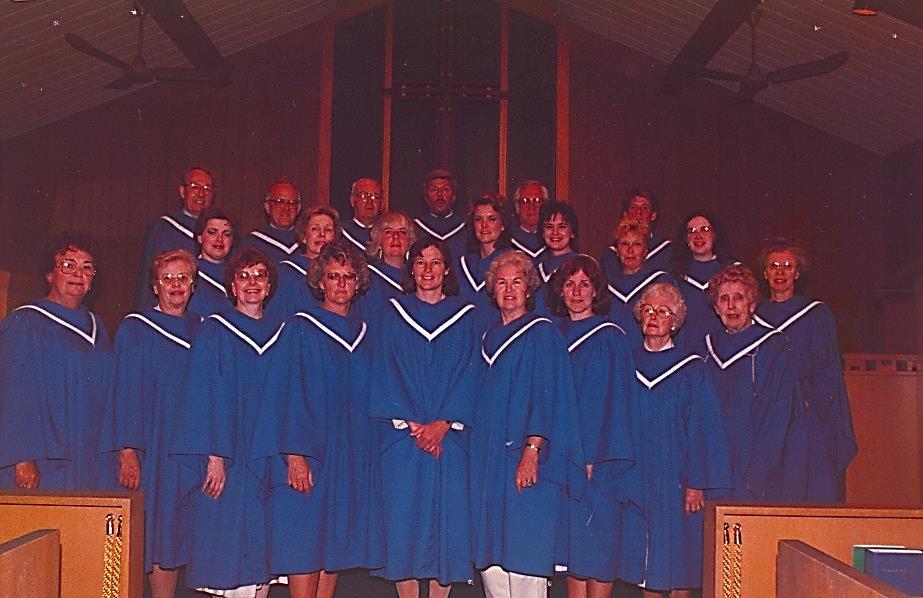
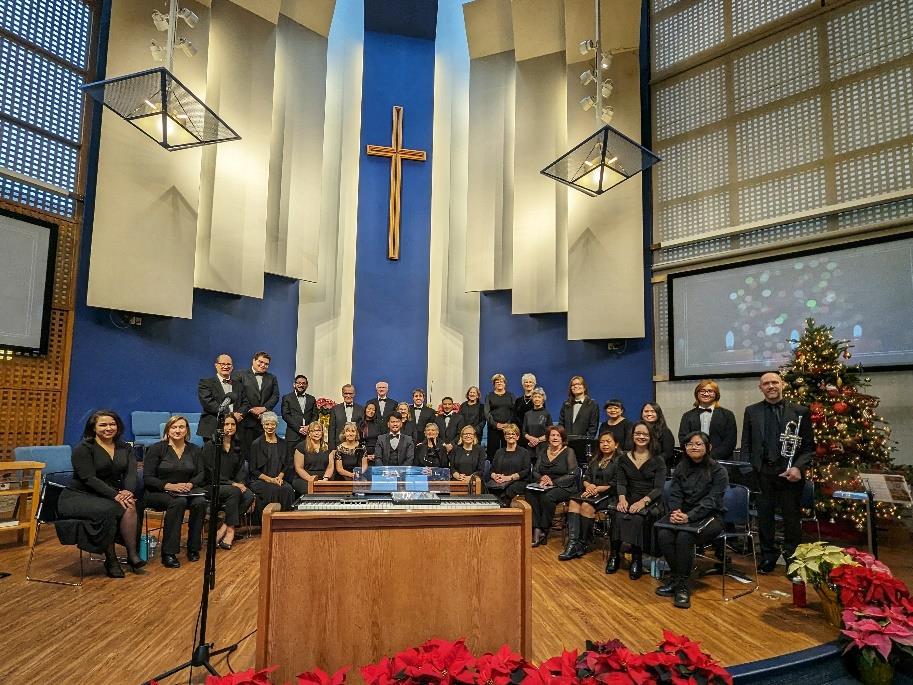
Christmas
34
1980s Trinity Choir with Director of Music
Kathleen (Kay) Williams, second from the right
2023, Trinity Choir with Director of Music
Michael Gomiega, centre front
Listed as gleaned from the Annual Reports of Trinity
Presbyterian Church York Mills, 1953 to 2023
General Assembly | Presbyterian Sharing4 - Presbyterian World Service and Development (PWS&D) – Canadian Foodgrains Bank -
Women’s Missionary Society (WMS)5 – Mission Board | Board of World Mission | Life and Mission Agency of The Presbyterian Church in Canada
Presbyterian Girls’ Home – Armagh House – Glen Mohr
Presbyterian Camp – Fernie House - North York Welfare – Scott Missions – Girl Guides, Brownies and Cubs – funds for an indigenous church – Presbyterian missionary and deaconess training school – Willowdale nursing home – Canadian Bible Society’s missions to Africa – Mental Health Association – Refugee Relief and InterChurch Aid – high school and university international scholarships – Christmas baskets for needy families –Ewart College – Presbyterian hospital in Kenya for abandoned babies – North York Welfare Department – Canadian Save the Children Fund – food vouchers and hampers – Camp Iona – Evangel Hall – Hospital for Sick Children – Canadian Bible Society – a new missionary residence – National Development Fund – Cancer
Dressing Group – Presbyterian Church Nigeria Biafra Relief –assistance to an Indian family – Books for Africa project –Kasabonika Cree village – Care of Canada (Ethiopia relief) – Heart Fund – Inner City Work – Grenfell Mission – Orio Korean Church –Canadian Cancer Society – Native Canadian Centre – York | Toronto Lung Association – Board of World Mission - Metro Billy Graham
4 General Assembly was the precursor to Presbyterian Sharing. Presbyterian Sharing is the fund that supports the national programs and ministries of the PCC
5 From 1970 to 2002 WMS was known as Presbyterian Women at Trinity
35
Missions since 1953
Crusade – Youth Drop-In – Vietnamese refugee family – Leprosy Mission – Theos – North York Women’s Shelter – Board of World Mission | Malawi and Yellowknife – Knox College – Benevolence at Christmas – Board of World Mission | Asian Mission Toronto –North York Disabled Persons Inc. – Tyndale University parish house – Tamil refugees – Unionville Presbyterian Church – Vietnamese support group – Crieff Hills – Sri Lankan refugees – Canadians for Decency – John Milton Society – Ontario Inter Varsity Christian Fellowship – People for Sunday – Board of World Mission | Christian education in China – Youth Mission Malawi – PWS&D India earthquake relief – Toronto Youth for Christ – orphans in Rwanda – Support Group for the Widowed – Canadian Red Cross –children’s church in Nigeria – hospitals in Nepal – Out of the Cold program – Ontario Early Years Centres – drinkable water and affordable housing for children in Nairobi, Kenya - North Peace Territorial Ministry - Medical Training Scholarship fund in India –WMS Aids | HIV support – humanitarian aid to Afghanistan –PWS&D girls education in Afghanistan - Eva’s Place - Francisco Coll School in Guatemala – World Vision (stables of animals) – medical supplies for the Congo – English conversation classes – refugee mission in Montreal – OASIS Addiction Recovery – Lansing United foodbank – Exousia Media Group – Kids to Camp – St. Stephens Presbyterian Church foodbank – mission to Peru – mission to young people in Australia - Grandmothers for Grandmothers, Stephen Lewis Foundation - Music at the Towers - Cariboo Presbyterian Church mission - Van Mossel Refugee Support fund, The Presbyterian Church in Canada - ARISE Ministry – Syrian refugees, SPARROW - MILKBAGS Unlimited - effect: hope (Leprosy) - a fresh water initiative project in Kenya - Boarding Homes MinistryWinnipeg Inner City Missions - Starting Life Right - Sowing Seeds of Food Security - PWS&D for Lebanon - Opportunity International Nicaragua.
36
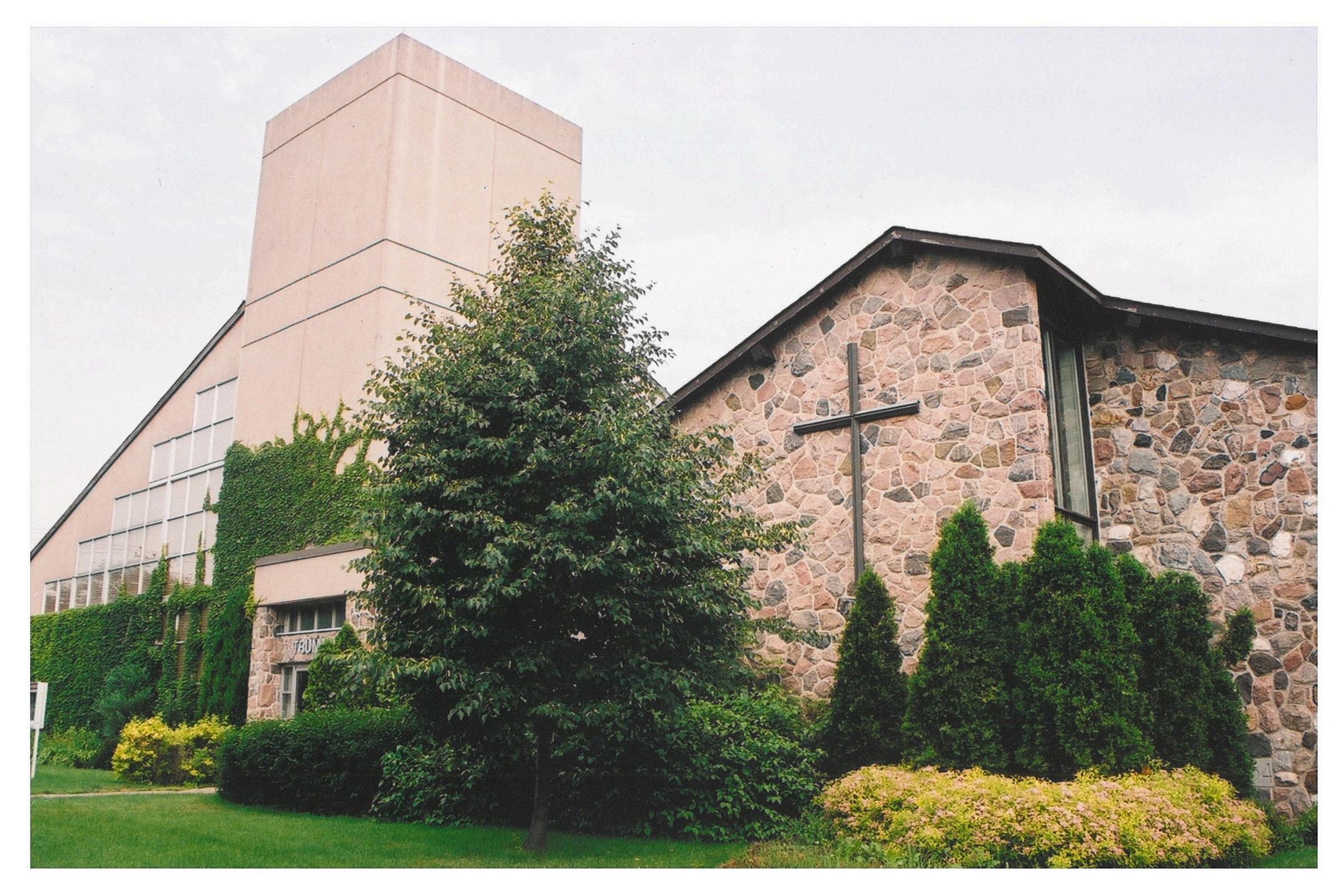
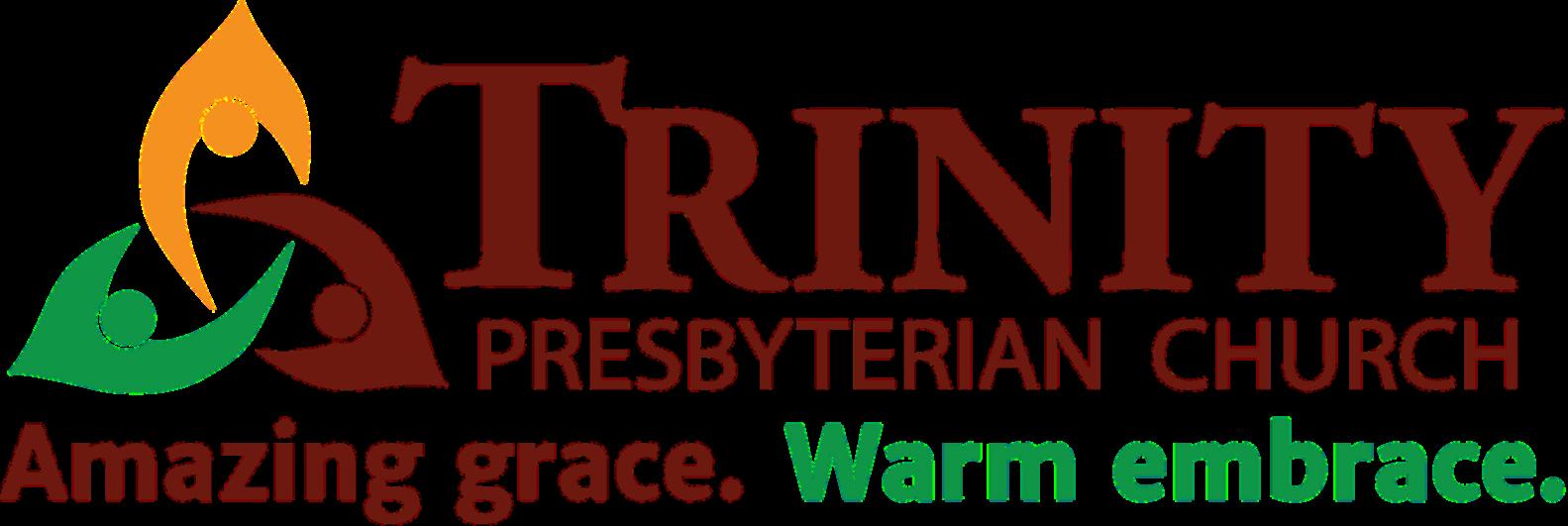


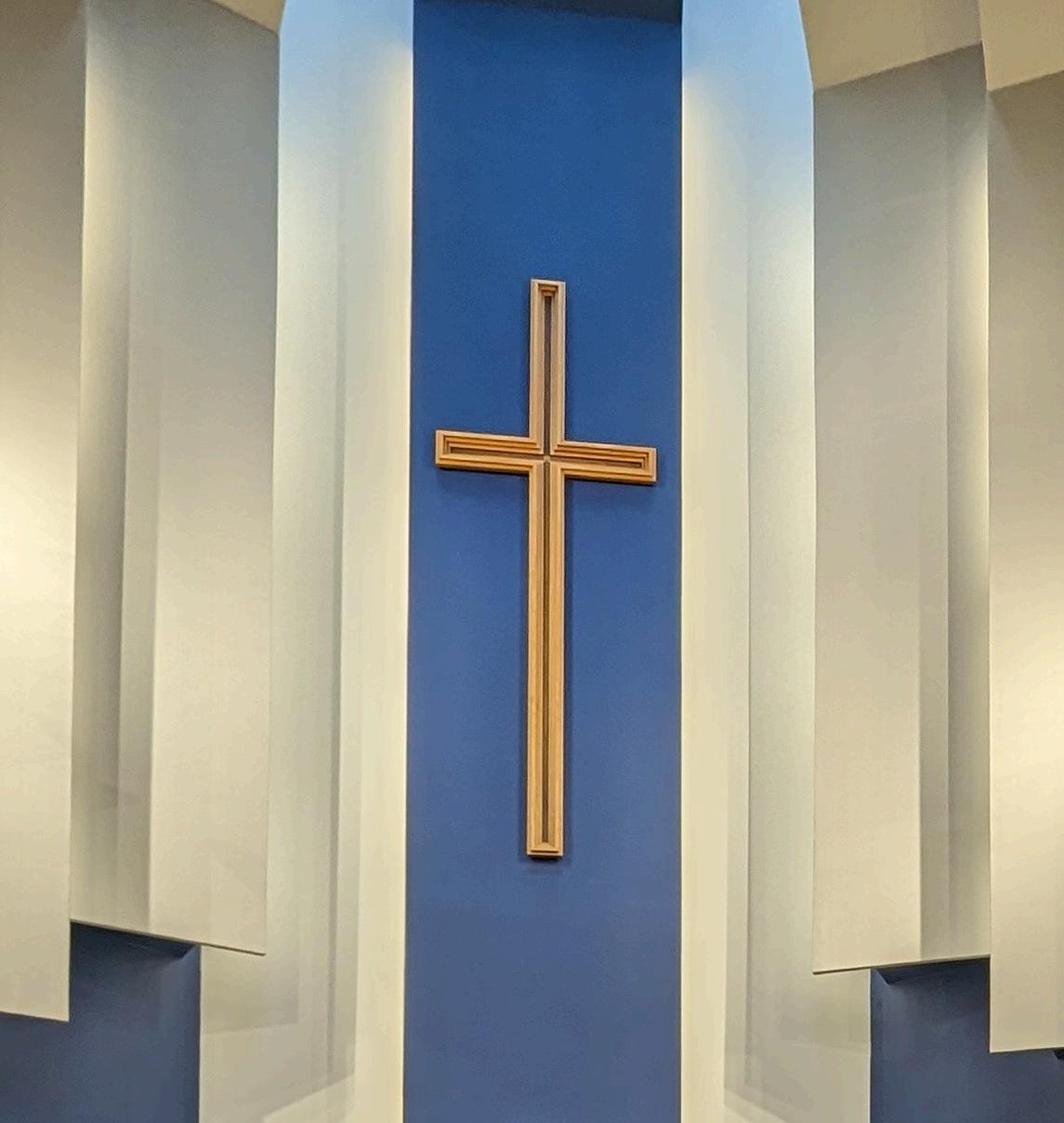










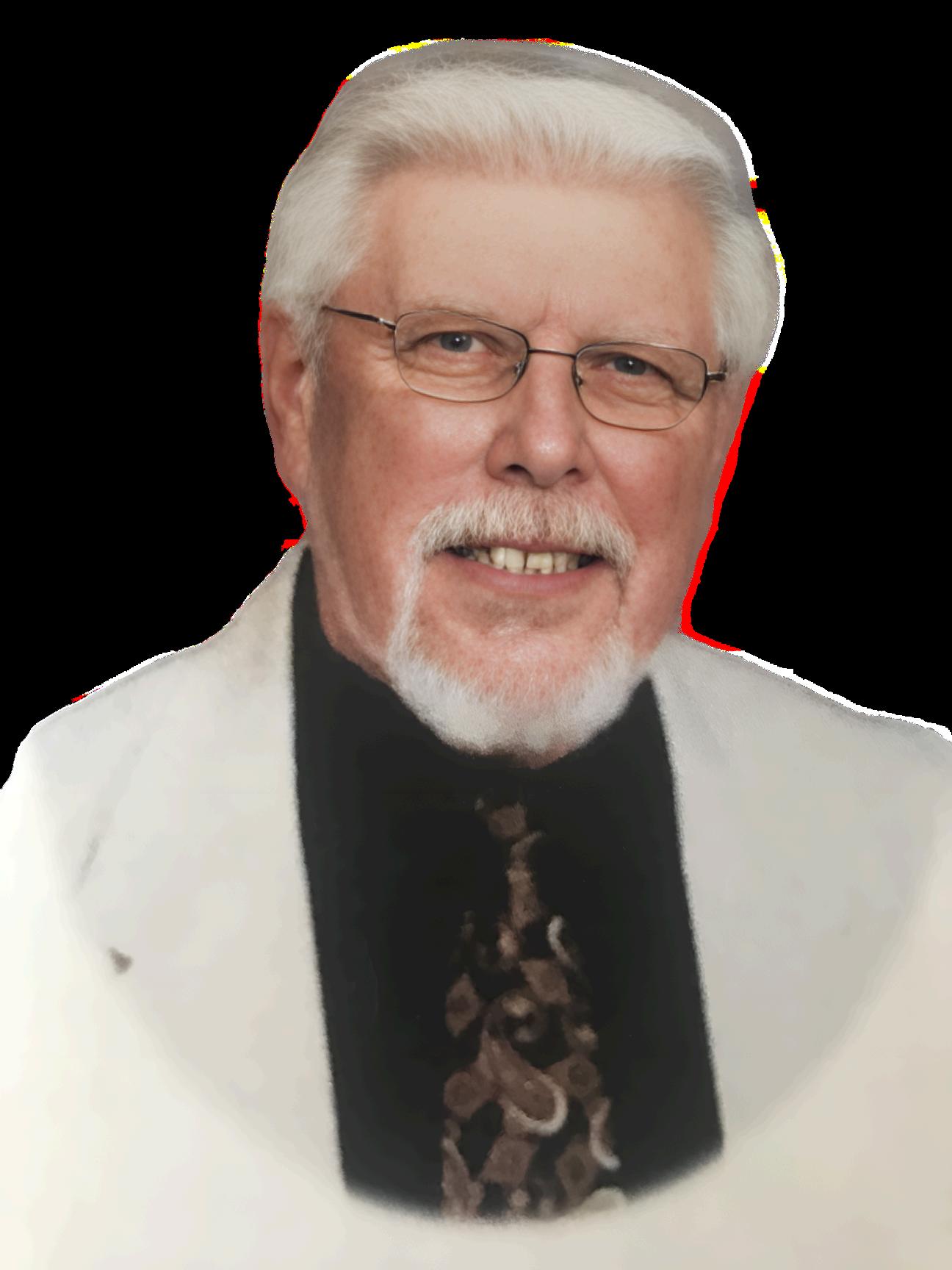
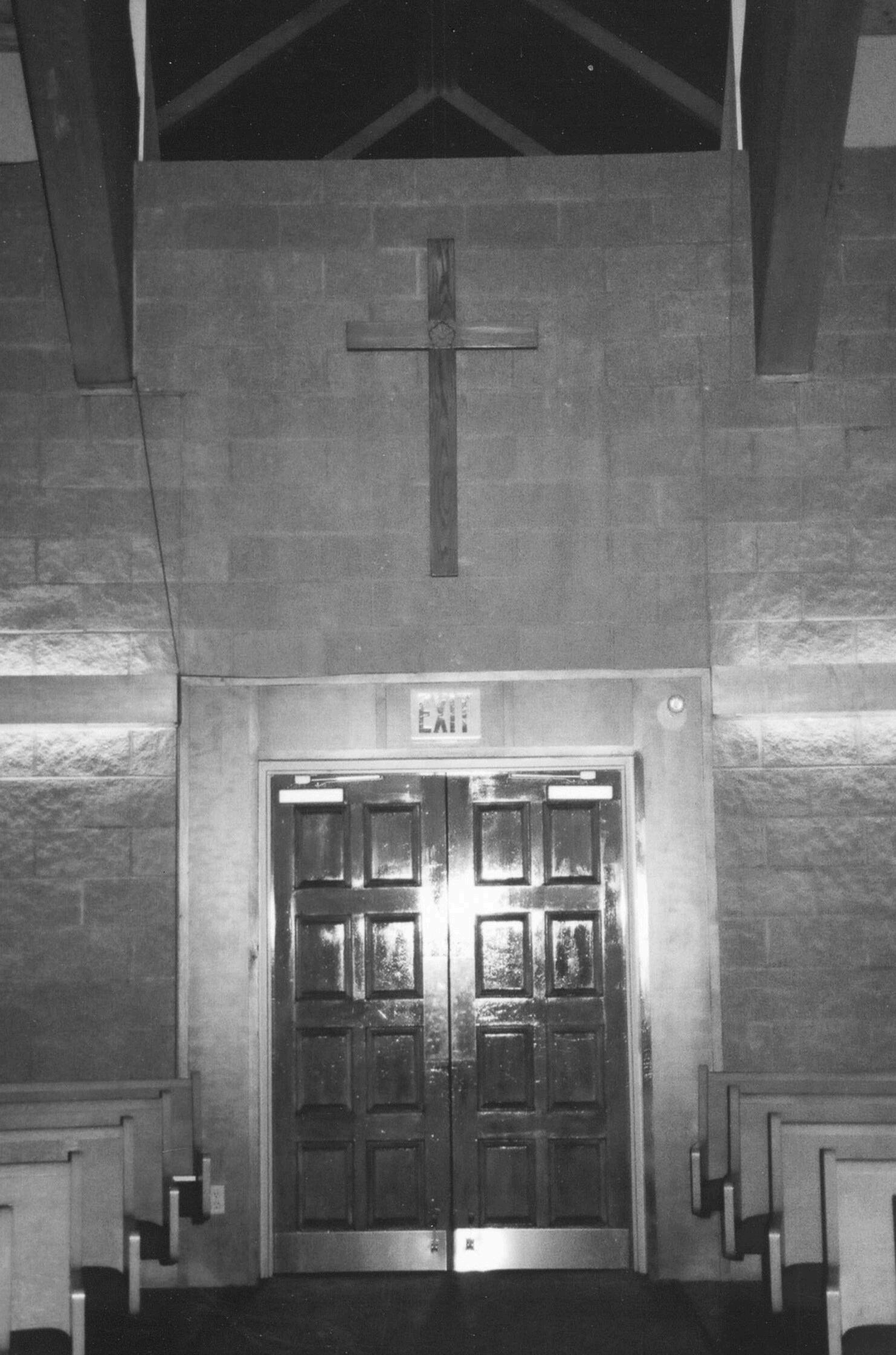
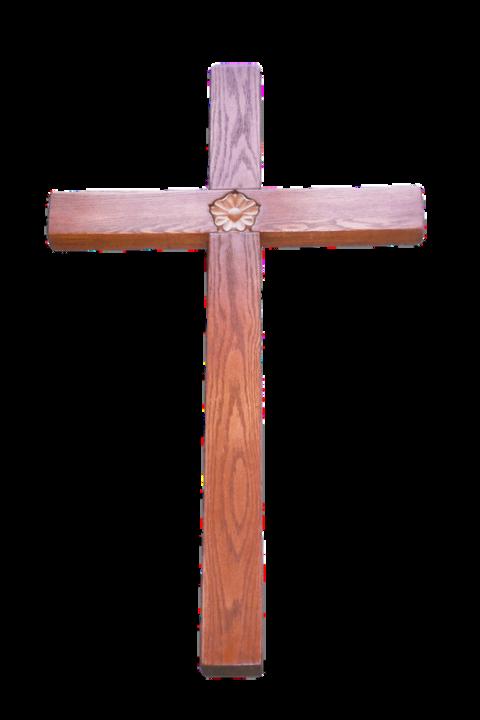
 Robert C. Campbell
Robert C. Campbell